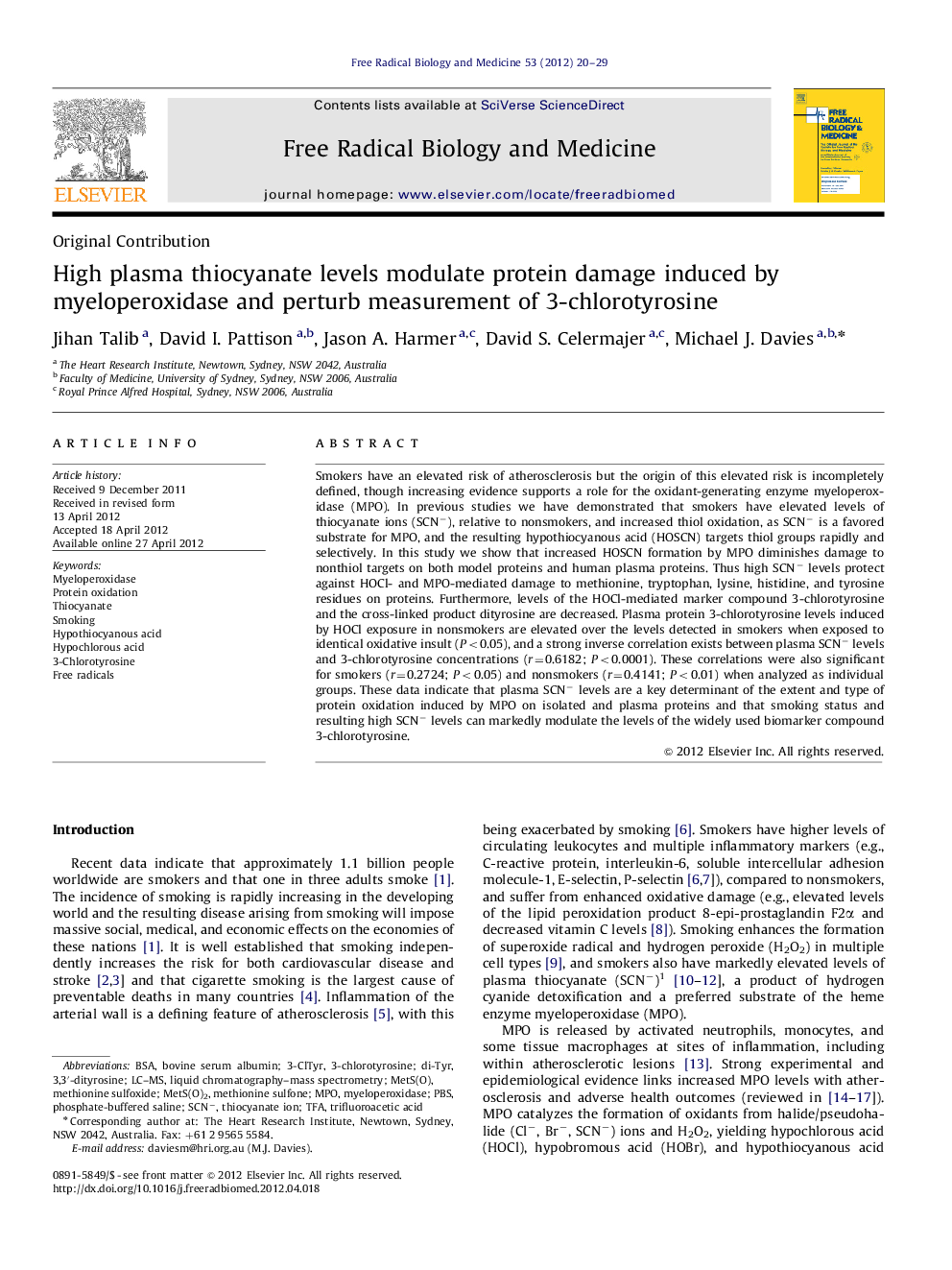| کد مقاله | کد نشریه | سال انتشار | مقاله انگلیسی | نسخه تمام متن |
|---|---|---|---|---|
| 1908839 | 1046687 | 2012 | 10 صفحه PDF | دانلود رایگان |

Smokers have an elevated risk of atherosclerosis but the origin of this elevated risk is incompletely defined, though increasing evidence supports a role for the oxidant-generating enzyme myeloperoxidase (MPO). In previous studies we have demonstrated that smokers have elevated levels of thiocyanate ions (SCN−), relative to nonsmokers, and increased thiol oxidation, as SCN− is a favored substrate for MPO, and the resulting hypothiocyanous acid (HOSCN) targets thiol groups rapidly and selectively. In this study we show that increased HOSCN formation by MPO diminishes damage to nonthiol targets on both model proteins and human plasma proteins. Thus high SCN− levels protect against HOCl- and MPO-mediated damage to methionine, tryptophan, lysine, histidine, and tyrosine residues on proteins. Furthermore, levels of the HOCl-mediated marker compound 3-chlorotyrosine and the cross-linked product dityrosine are decreased. Plasma protein 3-chlorotyrosine levels induced by HOCl exposure in nonsmokers are elevated over the levels detected in smokers when exposed to identical oxidative insult (P<0.05), and a strong inverse correlation exists between plasma SCN− levels and 3-chlorotyrosine concentrations (r=0.6182; P<0.0001). These correlations were also significant for smokers (r=0.2724; P<0.05) and nonsmokers (r=0.4141; P<0.01) when analyzed as individual groups. These data indicate that plasma SCN− levels are a key determinant of the extent and type of protein oxidation induced by MPO on isolated and plasma proteins and that smoking status and resulting high SCN− levels can markedly modulate the levels of the widely used biomarker compound 3-chlorotyrosine.
Graphical AbstractFigure optionsDownload high-quality image (91 K)Download as PowerPoint slideHighlights
► Smokers have high levels of SCN−, a key substrate for the enzyme myeloperoxidase (MPO).
► High SCN− levels decrease the generation of hypochlorous acid by MPO.
► This results in less protein damage at non-Cys residues and lower 3-chlorotyrosine.
► A strong inverse correlation is detected between SCN− and 3-chlorotyrosine levels.
► High SCN− levels perturb protein damage and use of 3-chlorotyrosine as a biomarker.
Journal: Free Radical Biology and Medicine - Volume 53, Issue 1, 1 July 2012, Pages 20–29